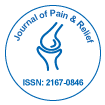Nosso grupo organiza mais de 3.000 Séries de conferências Eventos todos os anos nos EUA, Europa e outros países. Ásia com o apoio de mais 1.000 Sociedades e publica mais de 700 Acesso aberto Periódicos que contém mais de 50.000 personalidades eminentes, cientistas de renome como membros do conselho editorial.
Periódicos de acesso aberto ganhando mais leitores e citações
700 periódicos e 15 milhões de leitores Cada periódico está obtendo mais de 25.000 leitores
Indexado em
- Índice Copérnico
- Google Scholar
- Abra o portão J
- Genâmica JournalSeek
- Cosmos SE
- RefSeek
- Universidade Hamdard
- EBSCO AZ
- OCLC – WorldCat
- Publons
- Fundação de Genebra para Educação e Pesquisa Médica
- Euro Pub
- ICMJE
Links Úteis
Diários de acesso aberto
Compartilhe esta página
Abstrato
Prevalence, Characteristics and Impact of the Post-Thoracotomy Pain Syndrome on Quality of Life: A Cross-Sectional Study
Kamelia Javanshir Hersini, Jan Jesper Andreasen*, Parisa Gazerani, Birthe Dinesen and Lars Arendt-Nielsen
Background: Post-thoracotomy pain syndrome (PTPS) is relatively common with a varying prevalence of up to 80%. The objective of this study was to describe the prevalence, characteristics and impact of PTPS on quality of life among patients who underwent surgery either by open thoracotomy or video-assisted thoracoscopic surgery (VATS) due to lung cancer.
Methods: A questionnaire designed for the purpose of this study was sent to 200 consecutive patients who underwentsurgery for lung cancer at Aalborg University Hospital between December 2008 and April 2012. Patients reporting pain were asked to fill out four validated questionnaires; short-form McGill Pain Questionnaire, Neuropathic Pain Symptom Inventory, Short Form 36-Item Health Survey, and the PainDETECT questionnaire.
Results: Data were ultimately analysed from 133 patients. The overall prevalence of PTPS was 29% and there was no significant difference in prevalence following thoracotomy and VATS (30% vs. 24% respectively; p=0.65). Neuropathic pain symptoms were found in 95% of PTPS patients. Acute post-operative pain (p< 0.01) and duration of hospital stay (p<0.05) were most often seen in patients who developed PTPS. Patients with PTPS had significantly lower quality of life than patients without PTPS (p<0.01).
Conclusion: The prevalence of PTPS is relatively following thoracic surgery due to lung cancer without any difference between open surgery and VATS. Furthermore, PTPS has a great impact on daily living, and patients with PTPS have a significantly lower quality of life compared with patients without PTPS. Neuropathic pain symptoms were reported in nearly all of the PTPS patients.There is a need for large randomized studies to provide a better insight into development of PTPS in open thoracotomy vs. VATS.
Diários por Assunto
- Agro e Aquicultura
- Alimentação e Nutrição
- Bioquímica
- Ciência da Computação
- Ciência de materiais
- Ciencias ambientais
- Ciências Clínicas
- Ciências Farmacêuticas
- Ciências gerais
- Ciências Médicas
- Ciências Sociais e Políticas
- Ciências veterinarias
- Economia e Contabilidade
- Enfermagem e cuidados de saúde
- Engenharia
- Engenheiro químico
- Física
- Genética e Biologia Molecular
- Geologia e Ciências da Terra
- Gestão de negócios
- Imunologia e Microbiologia
- Informática
- Matemática
- Química
Revistas clínicas e médicas
- Anestesiologia
- Assistência médica
- Biologia molecular
- Cardiologia
- Cirurgia
- Dermatologia
- Diabetes e Endocrinologia
- Doenças infecciosas
- Enfermagem
- Fisioterapia e Reabilitação
- Gastroenterologia
- Genética
- Hematologia
- Imunologia
- Medicamento
- Medicina Reprodutiva
- Microbiologia
- Nefrologia
- Neurologia
- Odontologia
- Oftalmologia
- Oncologia
- Ortopedia
- Pediatria
- Pesquisa Clinica
- Pneumologia
- Psiquiatria
- Toxicologia

 English
English  Spanish
Spanish  Chinese
Chinese  Russian
Russian  German
German  French
French  Japanese
Japanese  Hindi
Hindi